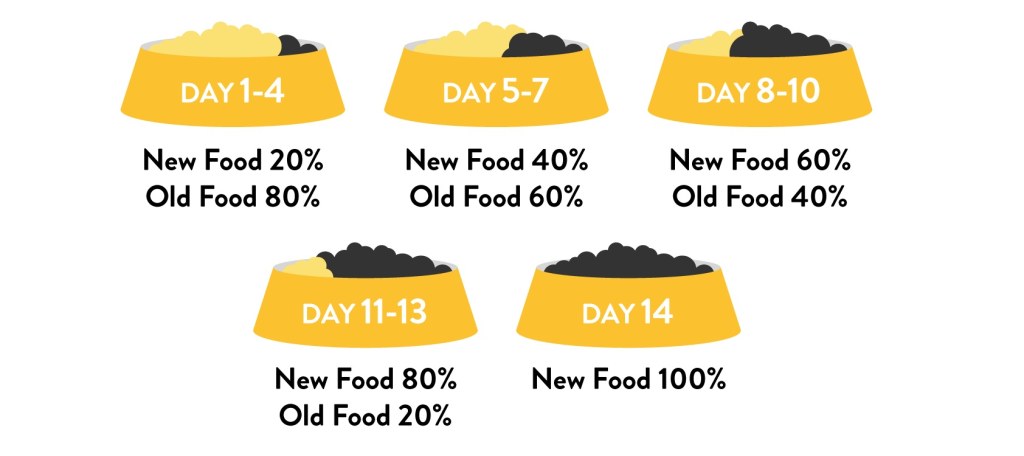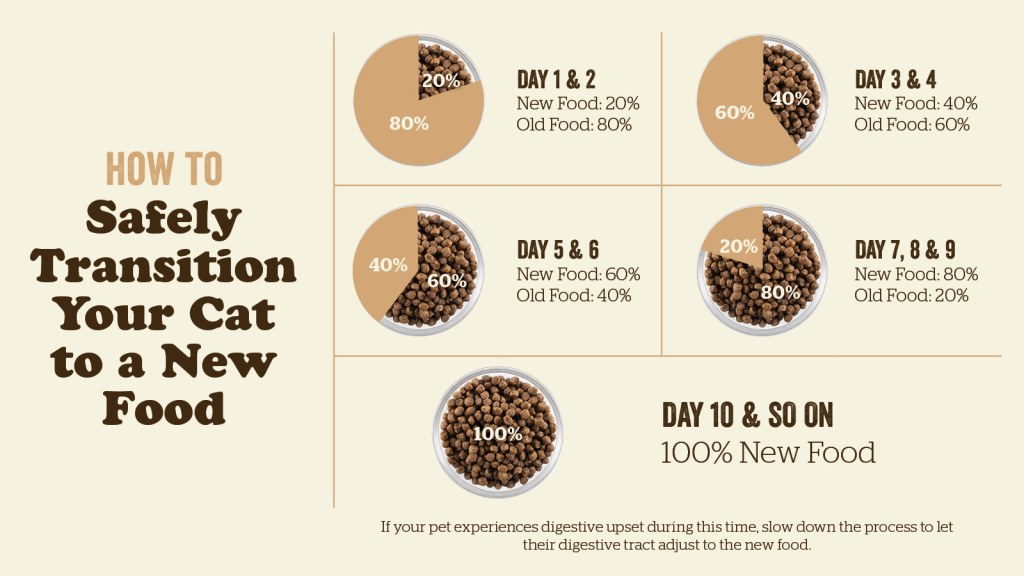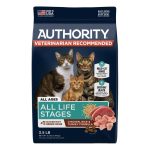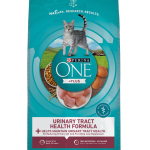Ultimate Guide: How To Effortlessly Switch Your Cat From Dry To Wet Food – Transform Their Diet For Optimum Health!
How to Switch Your Cat from Dry to Wet Food
Welcome, Cats Lover! If you’re considering switching your feline friend’s diet from dry to wet food, you’ve come to the right place. Many cat owners are making the switch to wet food due to its numerous benefits for their pet’s health. In this article, we will provide you with a step-by-step guide on how to successfully transition your cat from dry to wet food. Let’s dive in!
Introduction
Transitioning your cat from dry to wet food can be a gradual process to ensure that your furry friend adapts well to the new diet. It is important to note that sudden dietary changes may upset your cat’s stomach and lead to digestive issues. By following the steps outlined below, you can help your cat make a smooth transition to wet food:
3 Picture Gallery: Ultimate Guide: How To Effortlessly Switch Your Cat From Dry To Wet Food – Transform Their Diet For Optimum Health!



1. Consult Your Veterinarian
🐾 Before making any changes to your cat’s diet, it is crucial to consult your veterinarian. They can provide personalized advice based on your cat’s specific needs and health conditions. Schedule a visit to discuss the switch to wet food and get recommendations on suitable brands and flavors.
2. Introduce Wet Food Gradually

Image Source: bc0a.com
🐾 Start by mixing a small amount of wet food with your cat’s regular dry food. Gradually increase the proportion of wet food over a period of several days or weeks, depending on your cat’s tolerance. This slow transition allows your cat to get used to the new texture and flavor without causing any digestive upset.
3. Offer Variety
🐾 Cats can be picky eaters, so it’s important to offer a variety of wet food flavors and textures. This will prevent your cat from getting bored with the same food and ensure that they receive a balanced diet. Experiment with different brands and protein sources to find what your cat enjoys the most.
4. Monitor Your Cat’s Response

Image Source: petbarn.com.au
🐾 Keep a close eye on your cat during the transition period. Monitor their appetite, energy levels, and litter box habits. If you notice any signs of digestive upset or discomfort, slow down the transition process and consult your veterinarian for further guidance.
5. Gradually Eliminate Dry Food
🐾 Once your cat has successfully transitioned to wet food, you may consider gradually eliminating dry food from their diet. However, it is important to note that some cats prefer a combination of both wet and dry food. Discuss with your veterinarian to determine the best diet plan for your cat’s specific needs.
6. Maintain Proper Hydration

Image Source: ctfassets.net
🐾 Wet food contains a higher moisture content than dry food, which helps keep your cat hydrated. However, it’s still important to provide fresh water at all times. Monitor your cat’s water intake and ensure they have access to clean water throughout the day.
7. Be Patient
🐾 Switching your cat’s diet is a process that requires patience. Every cat is unique, and some may take longer to adjust to the new food than others. Stay consistent and continue offering wet food as the primary diet until your cat fully adapts.
What: Transitioning to Wet Food
Transitioning your cat from dry to wet food refers to the process of gradually introducing wet food into their diet while reducing the amount of dry food consumed. This switch offers several benefits for your cat’s health and well-being.
Who: Cat Owners
This guide is designed for cat owners who are interested in transitioning their cats from dry to wet food. It is beneficial for both kittens and adult cats, as wet food provides essential hydration and nutrients.
When: Transition Period
The transition period from dry to wet food will vary depending on your cat’s individual needs and preferences. It can range from a few days to several weeks. Monitor your cat’s response and adjust the pace accordingly.
Where: Feeding Environment
You can switch your cat’s diet from dry to wet food in the comfort of your own home. Ensure that your feeding area is clean, quiet, and free from distractions to encourage your cat to eat.
Why: Benefits of Wet Food
There are several benefits to switching your cat from dry to wet food. Wet food has a higher moisture content, which helps prevent dehydration and promotes urinary tract health. It also provides a more natural and species-appropriate diet for cats that closely resembles their ancestral feeding habits.
How: Step-by-Step Transition
Here is a step-by-step guide on how to successfully transition your cat from dry to wet food:
1. Consult Your Veterinarian
Before making any changes to your cat’s diet, consult your veterinarian to ensure it is suitable for their specific needs and health conditions. They can provide recommendations on the best brands and flavors to try.
2. Introduce Wet Food Gradually
Start by mixing a small amount of wet food with your cat’s regular dry food. Increase the proportion of wet food gradually over time, allowing your cat to adjust to the new texture and flavor.
3. Offer Variety
Provide a variety of wet food flavors and textures to prevent your cat from getting bored. Experiment with different brands and protein sources to find what your cat enjoys the most.
4. Monitor Your Cat’s Response
Keep a close eye on your cat’s appetite, energy levels, and litter box habits during the transition period. If you notice any signs of digestive upset, slow down the transition and consult your veterinarian.
5. Gradually Eliminate Dry Food
Once your cat has successfully transitioned to wet food, you may consider gradually eliminating dry food from their diet. However, some cats prefer a combination of both wet and dry food. Discuss with your veterinarian to determine the best diet plan for your cat.
6. Maintain Proper Hydration
While wet food helps keep your cat hydrated, it’s essential to provide fresh water at all times. Monitor your cat’s water intake and ensure they have access to clean water throughout the day.
7. Be Patient
Switching your cat’s diet is a process that requires patience. Every cat is unique, so be patient and consistent in offering wet food as the primary diet until your cat fully adapts.
Advantages and Disadvantages of Switching to Wet Food
Advantages:
1. Increased hydration: Wet food helps prevent dehydration, especially in cats who don’t drink enough water.
2. Improved urinary tract health: The higher moisture content of wet food promotes a healthy urinary system, reducing the risk of urinary tract infections and crystals.
3. Enhanced digestion: Wet food is easier to digest, especially for cats with sensitive stomachs or gastrointestinal issues.
4. Weight management: Wet food can help with weight control as it tends to be lower in calories compared to dry food.
5. Enhanced flavor and variety: Wet food offers a wide range of flavors and textures, making mealtime more enjoyable for your cat.
Disadvantages:
1. Cost: Wet food can be more expensive than dry food, especially if you opt for premium brands.
2. Shorter shelf life: Once opened, wet food needs to be refrigerated and used within a few days, unlike dry food that can be stored for longer periods.
3. Dental health: Wet food may not provide the same teeth-cleaning benefits as dry food, so additional dental care may be necessary.
4. Messier feeding routine: Wet food can be messier to serve and clean up compared to dry kibble.
5. Individual preferences: Some cats may not enjoy the texture or taste of wet food, making the transition more challenging.
Frequently Asked Questions (FAQ)
1. Can I mix dry and wet food together?
Yes, you can mix dry and wet food together to provide a balanced diet and cater to your cat’s preferences. Gradually increase the proportion of wet food over time.
2. How long does the transition process take?
The transition process can take anywhere from a few days to several weeks. It depends on your cat’s individual adaptability and tolerance to the new food.
3. What if my cat refuses to eat wet food?
Some cats can be resistant to change. Experiment with different flavors and textures, and consult your veterinarian for alternative options if your cat continues to refuse wet food.
4. Should I switch to wet food entirely?
Switching to wet food entirely is a personal choice. Some cats thrive on a combination of wet and dry food. Discuss your cat’s specific needs with your veterinarian to determine the best diet plan.
5. Can I prepare homemade wet food for my cat?
While homemade wet food can be an option, it requires careful attention to ensure proper nutrition. Consult your veterinarian or a veterinary nutritionist for guidance on preparing balanced homemade meals for your cat.
Conclusion
In conclusion, transitioning your cat from dry to wet food can provide numerous health benefits. Remember to consult your veterinarian, introduce wet food gradually, offer variety, monitor your cat’s response, and be patient throughout the process. Consider the advantages and disadvantages of wet food and make an informed decision based on your cat’s individual needs and preferences. By following these steps, you can successfully switch your cat to a healthier and more balanced diet.
Final Remarks
Switching your cat from dry to wet food requires careful consideration and patience. It is important to prioritize your cat’s health and well-being when making dietary changes. While this article provides general guidance, always consult your veterinarian for personalized advice and recommendations based on your cat’s specific needs. Remember, every cat is unique, and what works for one may not work for another. Take the time to observe and understand your cat’s preferences and adjust the transition process accordingly. Your cat’s health and happiness are worth the effort!
This post topic: Cats



